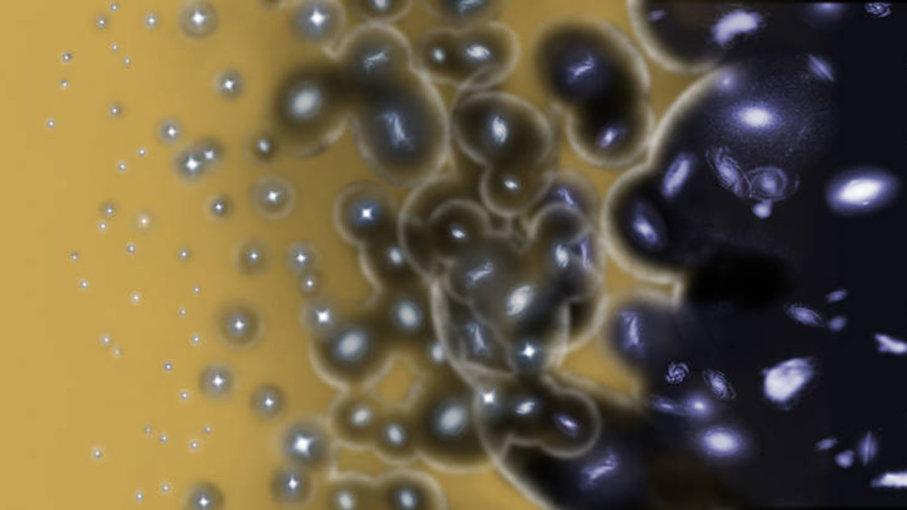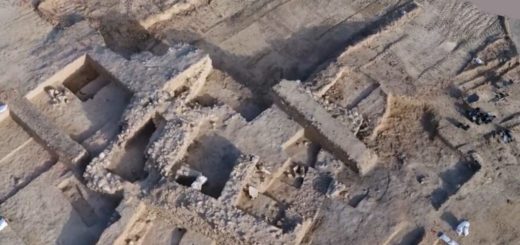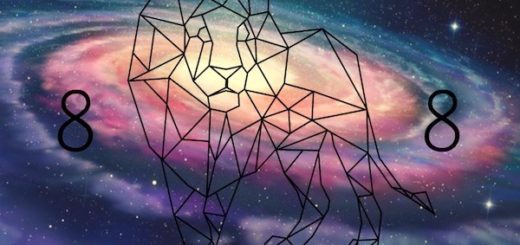Astronomers Determine When ‘Cosmic Dawn’ Happened

This illustration from the European Space Agency shows the epoch of reionization. What you’re looking at, from left to right: the most ancient light of the universe, the first stars, the reionization process and the first galaxies. ESA – C. CARREAU
Astronomers have uncovered a cosmic relic from the beginning of time that reveals when the first stars sparked to life. In doing so, they may have revealed a tantalizing clue as to how dark matter influenced our early universe.
Before we dive into what this relic is, we need to journey back to a time just after the Big Bang, which occurred 13.8 billion years ago. Back then, the universe was a swirling hot mess of plasma, a dense collection of highly charged (or ionized) particles. As the plasma cooled and the universe expanded, neutral hydrogen (the most basic atom consisting of a proton and an electron) started to form approximately 370,000 years after our universe sparked to life. Eventually, this neutral hydrogen gas clumped together under gravity, triggering the formation of the first stars that erupted with powerful X-rays.
Exactly when “cosmic dawn” occurred, however, has been open to debate. It happened so long ago, and that first light from those ancient baby stars is far too weak for even the most advanced observatory to detect.
A refrigerator-sized radio antenna located in Western Australia has helped to settle the debate though. It’s part of the Experiment to Detect the Global Epoch of Reionization Signature, or EDGES. In their cosmic dawn quest, the project’s researchers have been busy probing another source of ancient radiation called the cosmic microwave background, or the CMB. Often called the Big Bang’s afterglow, this radiation fills the universe and can be detected, so it’s handy for investigating the earliest epoch of our universe’s existence.
The All-important Signal: A Dip in Time
Let’s head back to those early days of the universe. As the CMB photons traveled through the interstellar neutral hydrogen around the time the first stars came to life, a fingerprint of stellar birth was embedded in these photons. Billions of years later, astronomers have just seen its signal — a telltale “dip” at a specific frequency.
“This is the first time we’ve seen any signal from this early in the Universe, aside from the afterglow of the Big Bang,” astronomer Judd Bowman told Nature. Bowman, who works at Arizona State University in Tempe, led the study that was published in the journal Nature on Feb. 28.
Finding this signal was no easy task. The researchers spent two years confirming and reconfirming their findings, trying to determine if the signal really was a window into cosmic dawn or unfortunate noise from our galaxy. They even had to painstakingly rule out radio interference from human activity on and near Earth.
“After two years, we passed all of these tests, and couldn’t find any alternative explanation,” Bowman relayed to Nature. “At that point, we started to feel excitement.”
That all-important signal was a dip in the CMB’s energy at a frequency of 78 megahertz. Here’s why: The powerful X-ray radiation from the earliest stars altered the behavior of the neutral hydrogen gas in interstellar space. In doing so, as the CMB photons traveled through this hydrogen gas, it absorbed a particular frequency – so rather than look for a specific emission, astronomers have been looking for a specific type of absorption, or a certain frequency of CMB radiation that was missing. This dip could have only been caused by the first X-ray tantrums of the earliest stars.
Map of universe’s first days from WMAP
This detailed, all-sky image of the universe’s first days was created using nine years of data collected by NASA’s Wilkinson Microwave Anisotropy Probe (WMAP). The different colors indicate temperature fluctuations. Those changes correspond with the seeds that would develop into our universe’s galaxies.
NASA/WMAP SCIENCE TEAM
As the universe is expanding, over time, this absorption band has become stretched. So, by precisely measuring how stretched this dip has become, the researchers were able to calculate how old it is. With all this knowledge in hand, they could work out that the first stars were born no earlier than 180 million years after the Big Bang. But that’s not all. The researchers were able to record the precise time when the signal was switched off.
Those first stars led hard and fast lives, burning bright and dying quickly as supernovas. This mass die-off generated very energetic X-rays, boosting the temperature of the ambient neutral hydrogen, cutting off its characteristic CMB absorption frequency. This happened at about 250 million years after the Big Bang. In effect, this research has opened a window into cosmic dawn, one that started 180 million years after our universe was born and ended 70 million years later – a period that represents the short time span of the first stars.
This cosmic archaeology dig could revolutionize our view of the earliest epochs of our universe. These first stars were the factories that churned out the first heavy elements, seeding our universe with elements that would go on to enrich later populations of stars, producing heavier and heavier elements that eventually formed the vast menagerie of stellar objects, planets and, ultimately, life. So, to see this important time is to glimpse the first embryonic stages of our universe’s diverse chemistry.
“If we really want to understand the cosmic ladder of our origins, this is a critical step to understand,” added Bowman.
The Matter of Dark Matter
This work appears to have stumbled on something else, too.
In a different Nature study based on this CMB signal, another research group notes that the dip at 78 megahertz is also notable for how dramatic it is. Though it only represents an energy dip of 0.1 percent, that dip is twice as powerful as theory predicts. This could mean that there was more radiation than predicted at cosmic dawn, or that the neutral hydrogen was being cooled by something. If the latter is proven to be correct, that “something” could be dark matter.
As we all know, dark matter is theorized to embody most of the mass in the universe. Through indirect measurements, astronomers know that it’s out there, but they just can’t “see” it. It’s so weakly interacting that we can only detect its gravitational oomph. But the depth of this CMB dip could be a signal coming from the effects of dark matter around the time when the first stars were popping into being, back when dark matter is theorized to be cold.
If this proves to be the case, things have just become even more exciting: If the depth of this dip is being amplified by cold dark matter, it means that the particles are smaller than current models of dark matter predict. In other words, this research could refine the search for dark matter and explain why physicists haven’t yet worked out what it is.
“If that idea is confirmed, then we’ve learned something new and fundamental about the mysterious dark matter that makes up 85 percent of the matter in the universe,” added Bowman in a statement. “This would provide the first glimpse of physics beyond the standard model.”
These are undoubtedly significant discoveries and could revolutionize our view of the cosmos, but the researchers point out that this is just the beginning of many years of focused research. In light of the dip discovery, other observatories are being retooled to study this interesting frequency, such as the Hydrogen Epoch of Reionization Array (HERA) project located in South Africa’s Karoo desert. The European Low-Frequency Array (LOFAR) project aims to go one step further and map the signal to see how it varies across the sky. If dark matter is amplifying this signal, astronomers should see a distinct pattern.
Although there’s some way to go before all these pieces of evidence add up to a revolutionary discovery, it’s exciting to think that astronomers haven’t just opened a window into cosmic dawn; they may have opened a window into the origins of dark matter, too.



 Creators of mankind
Creators of mankind Description of “Tall white aliens”
Description of “Tall white aliens” Where they came from?
Where they came from? About hostile civilizations
About hostile civilizations The war for the Earth
The war for the Earth “Tall white aliens” about eternal life
“Tall white aliens” about eternal life Video: “Nordic aliens”
Video: “Nordic aliens” Aliens
Aliens Alien encounters
Alien encounters The aliens base
The aliens base UFO
UFO Technology UFO
Technology UFO Underground civilization
Underground civilization Ancient alien artifacts
Ancient alien artifacts Military and UFO
Military and UFO Mysteries and hypotheses
Mysteries and hypotheses Scientific facts
Scientific facts


















